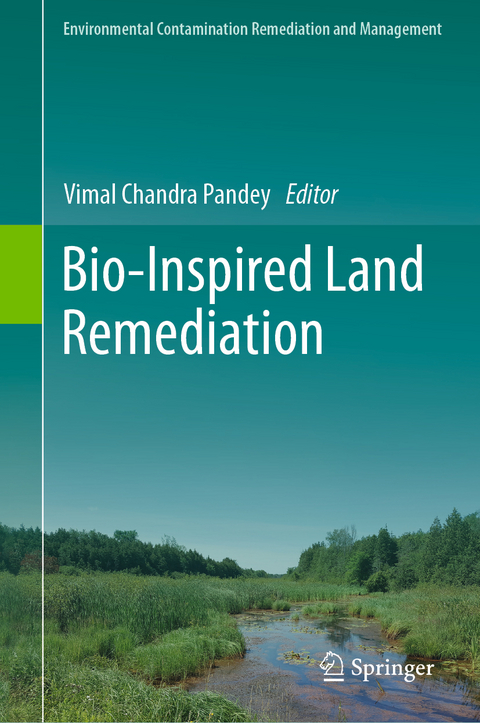
Bio-Inspired Land Remediation
Springer International Publishing (Verlag)
978-3-031-04930-9 (ISBN)
Dr. Vimal Chandra Pandey featured in the world's top 2% scientists curated by Stanford University, United States. Dr. Pandey is a leading researcher in the field of environmental engineering, particularly phytomanagement of polluted sites/post-industrial lands. He has published more than 100 scientific articles/book chapters in peer-reviewed journals/books. He is also the author and editor of several books published by Elsevier, with several more forthcoming. Dr. Pandey is Associate Editor/Editor/Board Member of the prestigious journals Land Degradation and Development; Restoration Ecology; Ecological Processes; Environment, Development and Sustainability; Ambio; Environmental Management; and Bulletin of Environmental Contamination and Toxicology by Wiley/Springer.
1. Bioenergy crop-based ecological restoration of degraded lands.- 2. Understanding the role of ruderal plant species in restoration of degraded lands.- 3. Utilizing polluted lands for growing crops.- 4. Plant Assisted Bioremediation of Heavy Metal Polluted Soils.- 5. Cutting-edge tools to access microbial diversity and their function in land remediation.- 6. Endophytic microbes and their role in land remediation.- 7. Fungal-based land remediation.- 8. Microbial detoxification of contaminated land.- 9. Vermi-remediation of metal(loid)s contaminated surfaces.- 10. Fly ash Management through Vermiremediation.- 11. Management of biomass residues using vermicomposting approach.- 12. Vermiremediation of agrochemicals, PAHs and crude oil polluted land.- 13. Biochar-based remediation of heavy metal polluted land.- 14. Soil carbon sequestration strategies: Application of biochar an option to combat global warming.- 15. Remediation of pharmaceutical and personal care products in soil using Biochar.- 16. Biochar for improvement of soil properties.- 17. Biochar production and its impact on sustainable agriculture.
| Erscheinungsdatum | 05.01.2023 |
|---|---|
| Reihe/Serie | Environmental Contamination Remediation and Management |
| Zusatzinfo | XXIII, 478 p. 54 illus., 49 illus. in color. |
| Verlagsort | Cham |
| Sprache | englisch |
| Maße | 155 x 235 mm |
| Gewicht | 844 g |
| Themenwelt | Naturwissenschaften ► Biologie ► Ökologie / Naturschutz |
| Naturwissenschaften ► Geowissenschaften | |
| Technik ► Lebensmitteltechnologie | |
| Technik ► Umwelttechnik / Biotechnologie | |
| Schlagworte | Contamination • Ecosystem Restoration • land pollution • remediation • Toxicology |
| ISBN-10 | 3-031-04930-6 / 3031049306 |
| ISBN-13 | 978-3-031-04930-9 / 9783031049309 |
| Zustand | Neuware |
| Haben Sie eine Frage zum Produkt? |
aus dem Bereich


